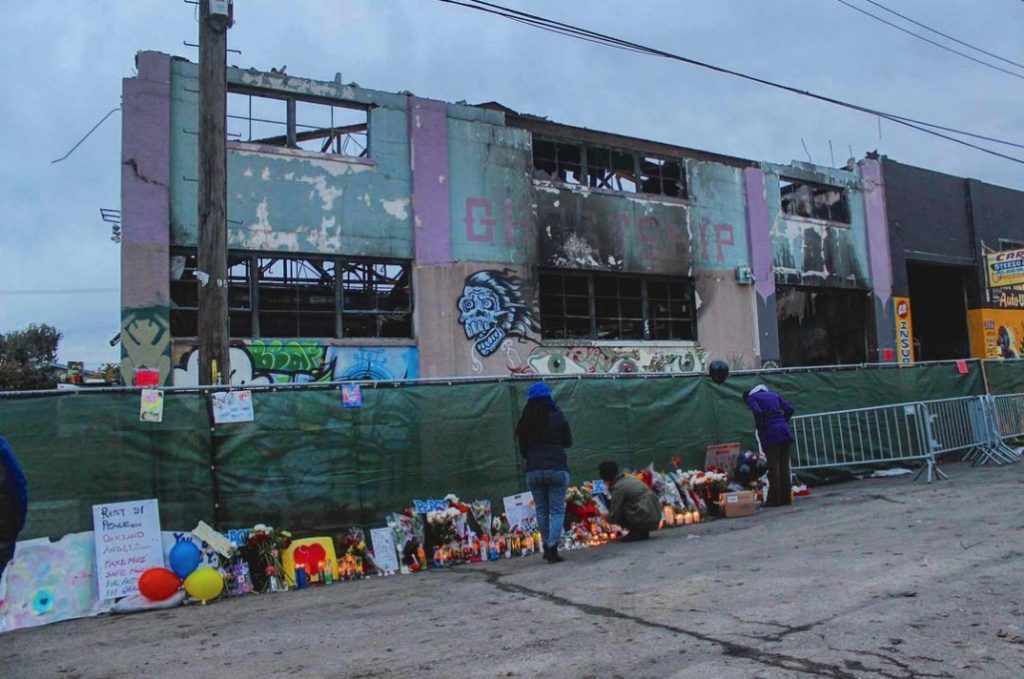In the wake of the tragic Ghost Ship warehouse fire in Oakland, live-work art spaces are undergoing heavy scrutiny, especially in regard to saftey. At the Creative Independent website, Brian Chippendale, a visual artist and member of the noise rock band Lighting Bolt, affirms the importance of these wonderful spaces. He tells the story of multiple converted warehouse spaces in Providence, Rhode Island he lived in. They not only provided ample working space and a loving community. With their low rents, they also provided a refuge from a life centered on making money. Here’s an excerpt from Chippendale’s piece, which is entitled “The Paradox of Life-Affirming Death Traps”:
A key component in these house shows or mill shows is the trust the host puts in the audience by opening the door to their home. When you enter a space that is lived in you feel a bond with the place and the person. That quickly imbues the show with a sense of higher meaning—that by entering a person’s house you have joined their family. I’ve been to boring shows in intensely loved spaces and still been wholly satisfied. Homes have a warmth that many venues do not, a vibe not of commercialism but of communal sharing. Performers in casual spaces tend to intermix with the audience and melt down the artificial wall between the artist and the viewer. These places can give a platform for the most out there of performers, performers whose expression cannot be commodified in its current state.
It’s communities like these that grow the roots that allow a city to form its own artistic identity. There is the feeling of freedom, the feeling that Big Brother’s eyes aren’t able to penetrate the walls or see those within, to judge who you are or how you are. (Not that there is a tremendous amount to judge.) Most gatherings in unmonitored spaces are generally just a lot of people dancing. Dancing and laughing. Building friendships and building character.
Fort Thunder was an unmonitored space, but it was not devoid of safety. We had a working sprinkler system. You’ll be hard pressed to find a warehouse in Providence that does not. We had fire extinguishers stashed throughout. We had a fire escape and a huge push bar front door that opened out into a wide staircase to the ground level, both exits accessible from the concert zone. We were on the second floor and there were multiple windows that could all be opened. It would have hurt like hell to jump, but you could have done it. We were conscious of hazards and the escapes on some basic level.
Still, Providence is different than the Fruitvale district of Oakland. Our huge front door had a broken lock for months and only a few strangers wandered in in the middle of the night. We only had one or two thefts during our run and even then it was nothing of much value. In Oakland, people grate and board up their windows out of necessity to keep the steady flow of unwanted visitors out of their space, not with the intention to trap people inside. Perhaps the inability to just open a window suggests that the dire economic issues outside of the Ghost Ship played a larger role in the fire’s narrative than the financial situation of the people inside.
Image: A sidewalk memorial to the Ghost Ship warehouse, Oakland.
